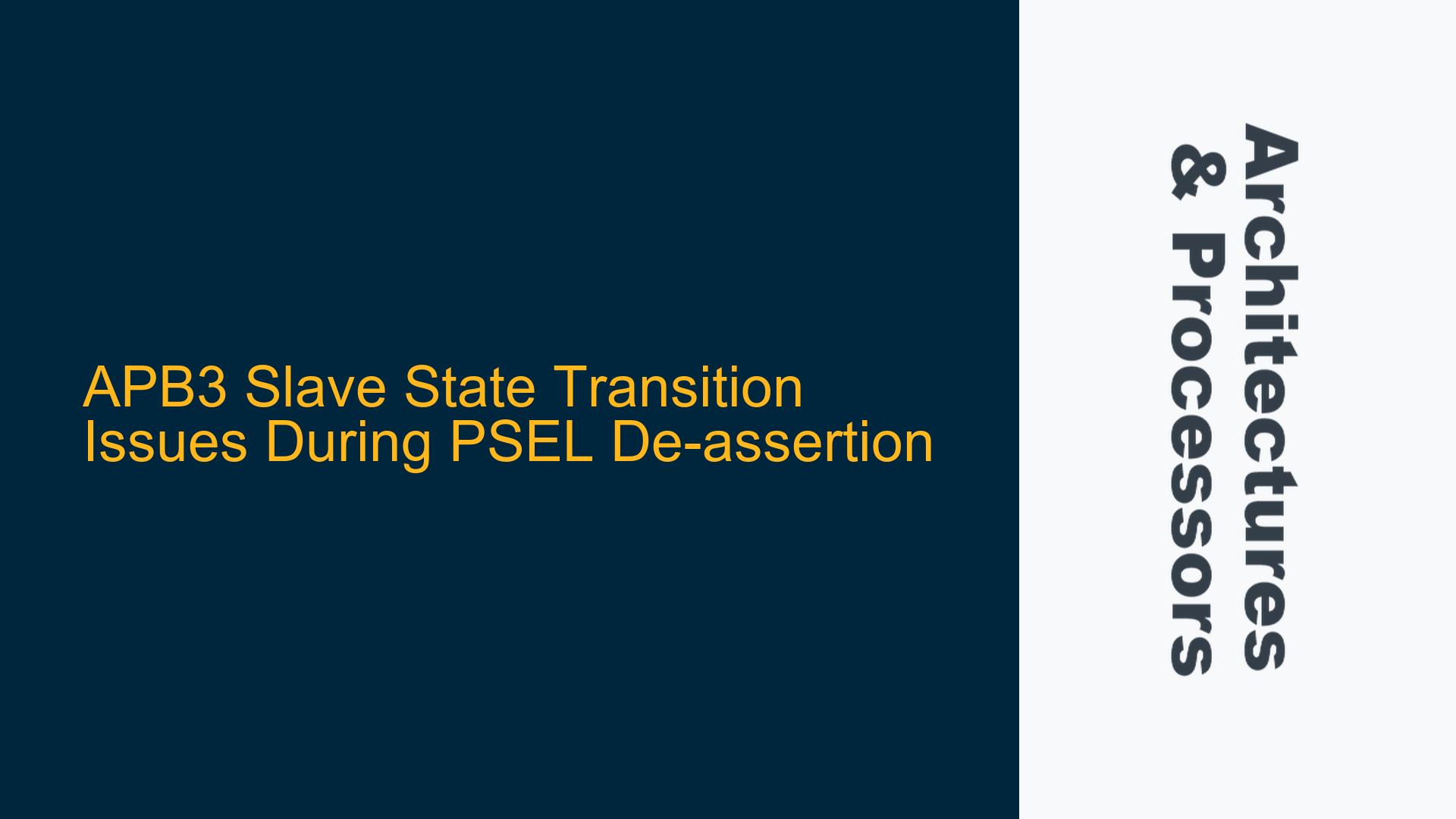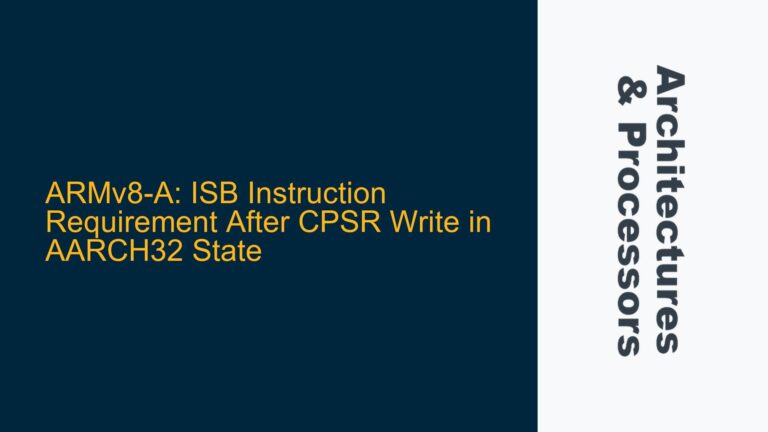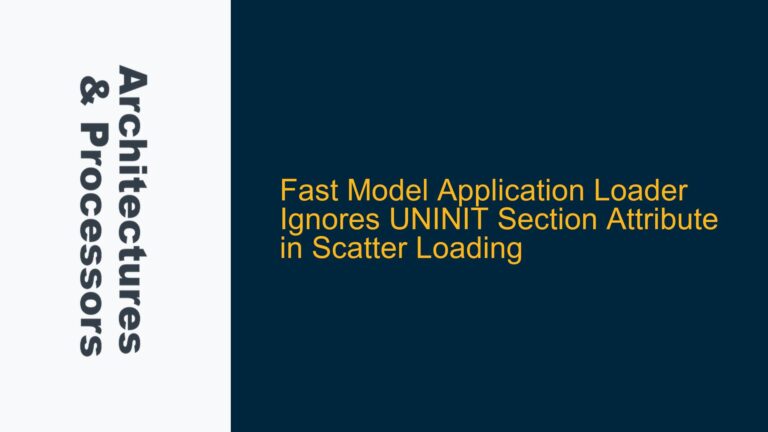APB3 Slave Responding Incorrectly During PSEL De-assertion
The core issue revolves around the APB3 slave’s state transition behavior when the master de-asserts the PSEL signal. Specifically, the APB3 slave is responding incorrectly when PSEL is de-asserted, leading to an undefined state or an incorrect transition from the ACCESS state to the SETUP state instead of the IDLE state. This behavior is observed during the transition from one APB slave to another in a multi-slave system-on-chip (SoC) environment. The problem manifests when the master completes a transaction with APB Slave 1, de-asserts PSEL and PENABLE, and the slave incorrectly transitions to the SETUP state instead of the IDLE state. This violates the APB protocol specification, which mandates that the slave should transition to the IDLE state when PSEL is de-asserted and PREADY is high.
The APB3 protocol defines three primary states for the slave: IDLE, SETUP, and ACCESS. The state transitions are governed by the PSEL, PENABLE, and PREADY signals. According to the protocol, when PSEL is de-asserted (PSEL = 0) and PREADY is high, the slave should transition from the ACCESS state to the IDLE state. However, in this scenario, the slave is transitioning to the SETUP state, which is incorrect and leads to undefined behavior. This issue is particularly problematic in multi-slave environments where the master switches between different slaves, as it can cause synchronization issues and incorrect data transactions.
The root cause of this issue lies in the timing and synchronization of the PSEL, PENABLE, and PREADY signals. The master is de-asserting PSEL and PENABLE one clock cycle after PREADY is asserted by the slave. This delay causes the slave to misinterpret the state transition, leading to the incorrect transition to the SETUP state. Additionally, the slave’s state machine may not be correctly interpreting the "PREADY=1 and no transfer" condition, which should trigger a transition to the IDLE state.
Misinterpretation of APB3 Protocol State Transitions and Signal Timing
The incorrect state transition behavior of the APB3 slave can be attributed to several factors, including misinterpretation of the APB3 protocol state transitions, improper signal timing, and potential issues with the slave’s state machine implementation. The APB3 protocol specifies that the slave should transition to the IDLE state when PSEL is de-asserted and PREADY is high. However, in this case, the slave is transitioning to the SETUP state, indicating a misinterpretation of the protocol.
One possible cause is that the slave’s state machine is not correctly interpreting the "PREADY=1 and no transfer" condition. According to the protocol, this condition should trigger a transition to the IDLE state. However, if the state machine is not correctly implemented, it may misinterpret this condition and transition to the SETUP state instead. This could be due to a flaw in the state machine design or an incorrect interpretation of the protocol specification.
Another potential cause is the timing of the PSEL and PENABLE signals. The master is de-asserting PSEL and PENABLE one clock cycle after PREADY is asserted by the slave. This delay can cause the slave to misinterpret the state transition, leading to the incorrect transition to the SETUP state. The slave may be sampling the PSEL and PENABLE signals at the wrong time, causing it to incorrectly interpret the state transition.
Additionally, the slave may not be correctly handling the transition from the ACCESS state to the IDLE state when PSEL is de-asserted. The protocol specifies that the slave should transition to the IDLE state when PSEL is de-asserted and PREADY is high. However, if the slave’s state machine is not correctly implemented, it may not handle this transition properly, leading to the incorrect transition to the SETUP state.
Correcting APB3 Slave State Transitions and Signal Synchronization
To resolve the issue of the APB3 slave incorrectly transitioning to the SETUP state when PSEL is de-asserted, several steps can be taken to ensure proper state transitions and signal synchronization. These steps involve modifying the slave’s state machine, ensuring proper signal timing, and verifying the implementation against the APB3 protocol specification.
First, the slave’s state machine should be reviewed and modified to correctly interpret the "PREADY=1 and no transfer" condition. This condition should trigger a transition to the IDLE state, as specified by the APB3 protocol. The state machine should be designed to correctly handle this transition and ensure that the slave transitions to the IDLE state when PSEL is de-asserted and PREADY is high. This may involve adding additional logic to the state machine to correctly interpret the condition and trigger the appropriate state transition.
Second, the timing of the PSEL and PENABLE signals should be carefully reviewed to ensure that they are correctly synchronized with the PREADY signal. The master should de-assert PSEL and PENABLE on the same clock cycle that PREADY is asserted by the slave. This will ensure that the slave correctly interprets the state transition and transitions to the IDLE state. If necessary, the master’s timing should be adjusted to ensure that PSEL and PENABLE are de-asserted on the same clock cycle as PREADY.
Third, the slave’s implementation should be thoroughly verified against the APB3 protocol specification. This verification should include both simulation and formal verification to ensure that the slave correctly handles all state transitions and signal conditions. The verification process should include test cases that cover all possible state transitions, including the transition from the ACCESS state to the IDLE state when PSEL is de-asserted. Any discrepancies between the implementation and the protocol specification should be identified and corrected.
Finally, it may be necessary to add an intermediate state to the slave’s state machine to ensure proper handling of the transition from the ACCESS state to the IDLE state. This intermediate state would allow the slave to correctly interpret the "PREADY=1 and no transfer" condition and transition to the IDLE state. The intermediate state should be designed to ensure that the slave does not incorrectly transition to the SETUP state when PSEL is de-asserted.
In conclusion, the issue of the APB3 slave incorrectly transitioning to the SETUP state when PSEL is de-asserted can be resolved by modifying the slave’s state machine, ensuring proper signal timing, and thoroughly verifying the implementation against the APB3 protocol specification. By taking these steps, the slave can be made to correctly handle state transitions and ensure proper synchronization with the master, thereby avoiding undefined behavior and ensuring correct operation in a multi-slave SoC environment.






